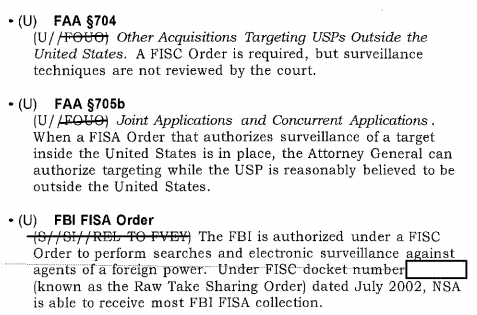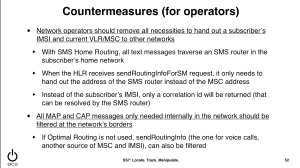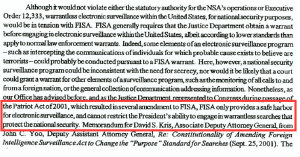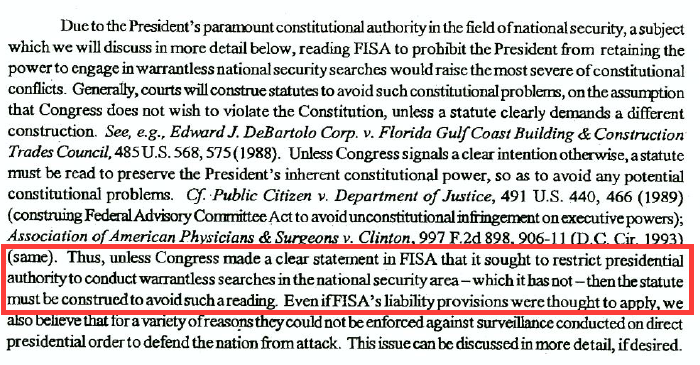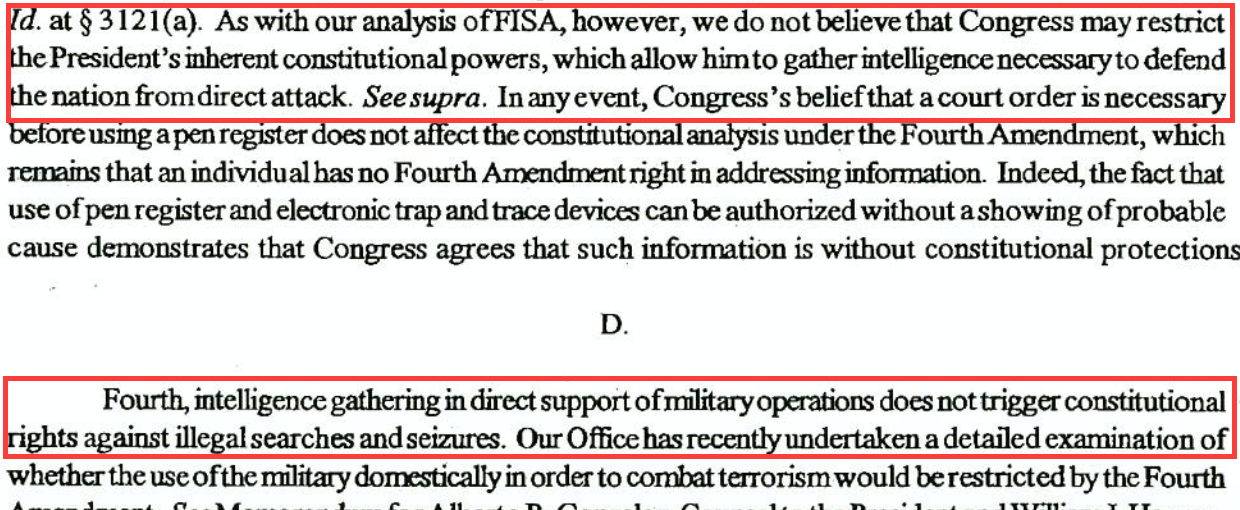For Second Year in a Row, HPSCI Tries to Gut PCLOB
As I reported, during the passage of Intelligence Authorization last year (which ultimately got put through on the Omnibus bill, making it impossible for people to vote against), Congress implemented Intelligence Community wishes by undercutting PCLOB authority in two ways: prohibiting PCLOB from reviewing covert activities, and stripping an oversight role for PCLOB that had been passed in all versions of CISA.
In the 2017 Intelligence Authorization HPSCI passed on April 29, it continued more of the same. It does so in two ways:
Requires it to get its appropriations approved by Congress
Section 303 changes the authorizing language for PCLOB to state that it can only spend money on things if Congress specifically authorized it.
SEC. 303. AUTHORIZATION OF APPROPRIATIONS FOR PRIVACY AND CIVIL LIBERTIES OVERSIGHT BOARD.
(a) REQUIREMENT FOR AUTHORIZATIONS.—Sub-section (m) of section 1061 of the Intelligence Reform and Terrorism Prevention Act of 2004 (42 U.S.C. 2000ee(m)) is amended to read as follows:
(m) FUNDING.—
(1) SPECIFIC AUTHORIZATION REQUIRED.— Appropriated funds available to the Board may be obligated or expended to carry out activities under this section only if such funds were specifically authorized by Congress for use for such activities for such fiscal year.
(2) DEFINITION.—In this subsection, the term ‘specifically authorized by Congress’ has the meaning given that term in section 504(e) of the National Security Act of 1947 (50 U.S.C. 3094(e)).’
(b) AUTHORIZATION OF APPROPRIATIONS.—There is authorized to be appropriated to the Privacy and Civil Liberties Oversight Board for fiscal year 2017 the sum of $10,081,000 to carry out the activities of the Board under section 1061 of the Intelligence Reform and Terrorism Prevention Act of 2004 (42 U.S.C. 2000ee(m)).
At one level, this looks like nothing more than bureaucratic dick-waving, a reminder to PCLOB that Congress can cut off funding if it does things like deign to comment on covert spying activities.
But — particularly given the way the Intelligence Communities stripped PCLOB’s involvement in CISA oversight at the last minute — I wonder whether this will restrict what PCLOB can do under presidential orders. Congress set up PCLOB such that its mandate covers only counterterrorism programs. But with EO 13636 (the EO that set up the information sharing system that, with significant changes, became CISA) and PPD 28, President Obama gave PCLOB a cybersecurity role beyond that defined in statute. So I wonder whether this is a way to further PCLOB remove from cybersecurity oversight than those last minute changes already did.
The authorization still granted PCLOB its requested funding (and that request did lay out those cybersecurity activities), so this may just be, for the moment, a shot across the bow.
Requires the Committee to warn the Intelligence Committees and Intelligence Agency heads before they conduct any oversight
The bill also adds new reporting requires on PCLOB, beyond the biennial reports that go to a number of congressional committees. In short, the new language requires PCLOB to warn the Intelligence Committees and the heads of an intelligence agency before they start doing any oversight.
SEC. 307. INFORMATION ON ACTIVITIES OF PRIVACY AND CIVIL LIBERTIES OVERSIGHT BOARD
Section 1061(d) of the Intelligence Reform and Terrorism Prevention Act of 2004 (42 U.S.C. 2000ee(d)) is further amended by adding at the end the following new paragraph:
(5) INFORMATION.—
(A) ACTIVITIES.—In addition to the reports submitted to Congress under subsection (e)(1)(B), the Board shall ensure that each official and congressional committee specified in subparagraph (B) is kept fully and currently informed of the activities of the Board, including any significant anticipated activities.
(B) OFFICIALS AND CONGRESSIONAL COMMITTEES SPECIFIED.—The officials and congressional committees specified in this subparagraph are the following:
(i) The Director of National Intelligence.
(ii) The head of any element of the intelligence community (as defined in section 3(4) of the National Security Act of 1947 (50 U.S.C. 3003(4)) the activities of which are, or are anticipated to be, the subject of the review or advice of the Board.
(iii) The Permanent Select Committee on Intelligence of the House of Representatives and the Select Committee on Intelligence of the Senate.
Of particular note: if PCLOB warned the spooks, and the spooks prohibited PCLOB oversight (again), it’s not clear how the other committees of jurisdiction — which include the Judiciary, Homeland Security and House Oversight Committee, in addition to the Intelligence Committees — would get notice.
These changes are being made based on an Intelligence Committee claim that they give PCLOB — one of the very few entities that has proven to effectively oversee the Intelligence Community — more “oversight.” But it’s hard to understand how they’ll do anything more than ensure that the Intelligence Committees return to the status quo position where they’re the only entities permitted to (not) oversee the IC.
In other words, HPSCI — of all entities !!! — claims that that committee, which has serially failed at overseeing just about anything, must give the overseers greater oversight.

